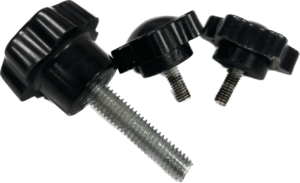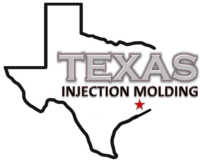 What is insert molding?
What is insert molding?
Insert molding is the process by which a secondary component such as a bushing, threaded component, conductive media or other desired component is joined with the plastic during the injection molding process.
What materials can be inserted?
Virtually any material that has a melting point greater than that of the plastic that is being molded can be inserted. The most common materials are metals such as steel, brass or copper.
What are the benefits of insert molding?
Combining inserted components with the injection molding process:
- Reduces the post molding assembly labor and associated cost.
- Increases the strength of the assembly by encapsulating the inserted part.
- Proper fixturing in the mold provides greater accuracy and tighter tolerances.
- Thermoplastic provides insulative properties to provide protection from electrical shock or arc in electrical applications.
- Insert molding can add design and cosmetic benefits to parts with graphics or other design features molded into the thermoplastic.
- Insert molding can also be designed to produce features in the plastic part to reduce the cost of the mold. In these applications the inserts are removed after molding to leave the features such as threads, holes or other features in the part after injection molding.
What are the most common applications that utilize insert molding?
- Electrical sockets, plugs, switches, relays, sensors and specialty electrical components in every industry utilize the insulative properties of thermoplastics to improve quality, reduce cost and improve safety and reliability.
- Embedding threaded inserts, studded inserts for threaded connections are widely used and are available from catalogues such as Pencom. These threaded inserts are inexpensive and provide holding strength of metal, but take advantage of the properties of thermoplastic in the part body.
- Metal inserts are utilized in high wear surfaces such as sleeves and bushings in rotating equipment for automotive applications, food and beverage components, medical and aerospace products.
- Metal Springs, pins, and screens are commonly insert molded as well as a wide variety of fabrics.
- The applications for insert molding is only limited by your imagination.
What is the process for insert injection molding?
- The mold is the most important component of the insert molding process. The mold must be designed to hold the insert in the desired location under the injection pressure while shutting off on areas that the design requires the insert to be exposed. The process of loading and unloading the inserts repeatedly must be considered in the design of the mold.
- The material must be compatible with the insert to be molded. Engineering will select the proper thermoplastic materials with the desired mechanical properties for the application.
- The insert is placed into the mold prior to the injection process by a robot, by hand or by mechanical feeder. At times it may be beneficial to preheat the insert to improve bonding in some applications.
- The injection molding press may be a vertical press where the insert lays horizontally and is held in place by gravity and the thermoplastic material is injected into the part vertically. Insert molding can also be accomplished with more traditional horizontal injection molding presses. In a horizontal press the mold must be designed to capture the insert and hold it in place during the injection process. This video shows an example of insert molding in a horizontal press.
How large of an insert can you handle?
Inserts used in injection molding are typically small threaded or connection mechanisms, but we also commonly use inserts that are the primary working mechanism encapsulated by plastic or inserts used specifically to add weight to injection molded parts. In our larger presses it is not uncommon to use an insert that weighs 5 lbs. or more. For handloaded inserts that are removed following the injection molding process, it is not uncommon to have inserts weighing up to 10 lbs.
What are the design considerations for insert molding?
The design of a insert molded application follows the same guidelines for designing an traditional injection molded part. Generally, you will want to have consistent wall thickness, no sharp corners and consideration for gating the part to minimize impact of injection pressure that could distort the insert during the molding process. This link will provide a general design guide for injection molded parts.
If we can help you with your project please call us at 281 489-4292 or contact us here.
